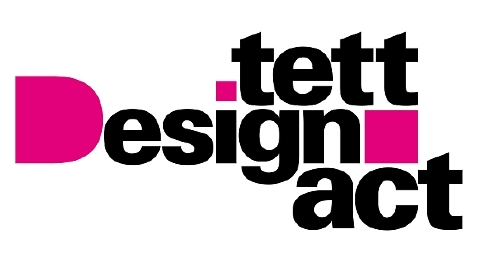Design Act
Socially Reforming Design in Lajos Kass├ĪkŌĆÖs Work
Kass├Īk Museum, Budapest, 11 October 2013 – 4 February 2014

The exhibition Design Act ŌĆō Socially Reforming Design in Lajos Kass├ĪkŌĆÖs Work presents a selection of the Kass├Īk MuseumŌĆÖs collection from the aspect of critical design theories. As a critical tool, design uses the mechanisms, logic and activity of planning and engineering, while keeping social responsibility, sustainability and the interests of disadvantaged groups in mind, and staying sensitive to issues of inequality and power relations. This can primarily be spotted in the planning process and the ideas related to it, despite the fact that graphic design has been a key factor in social and political life for long. Its pursuers believe that design is capable of provoking, inspiring, making us think and questioning our prejudices, our fundamental presumptions, by way of which it contributes to social change.
The notion of critical design is not a new idea; its antecedents can be discovered in the historical avant-garde trend which associated political goals with the problems of art, while querying the validity of a purely aesthetic interpretation of art. Lajos Kass├ĪkŌĆÖs dedication to social ideas provides adequate basis for taking a look at his work between the two World Wars from the reality-shaping aspect of design. The programmatic texts, statements, essays on art and typography published in the journals A Tett [The Act], Ma [Today], Dokumentum [Document] and Munka [Work], as well as the investigative reportages of the latter, altogether created new forms of conveying political ideals, which can be considered the antecedents of todayŌĆÖs activist practices. These twenty or so years not only illustrate the development of visual communication, but also shed light on the evolution of political and artistic strategies. Between his historical experiences, international network of relations and the local conditions, Kass├ĪkŌĆÖs relation towards political participation had inevitably changed, as a result of which, the path he took led from the interpretation of art as a political act towards a utopian approach. In developing his unique constructivist program, his ultimate goal was the creation of the new man and the new social order. Despite the diversity of his ideas, he was not conceiving of reforming merely a specific social sphere, institution or field, but wanted to transform the entire life-world, including the individual. The late twenties meant eliminating the boundary between life and art, with openness towards universal ideas and utopias. This was when, on the basis of practical requirements, Kass├Īk reconsidered and reformed the publication of the journal Munka and the representation of its circles in the spirit of emancipating the working class.
Through a parallel historical example, the exhibition seeks answers to how graphical and typographical solutions acquire meanings, how they are capable of conveying socially critical standpoints and ideas, and in what way they facilitate change. According to our hopes, this will help our visitors better understand and more consciously use the communication techniques and visual forms of todayŌĆÖs movements and civil sphere.
